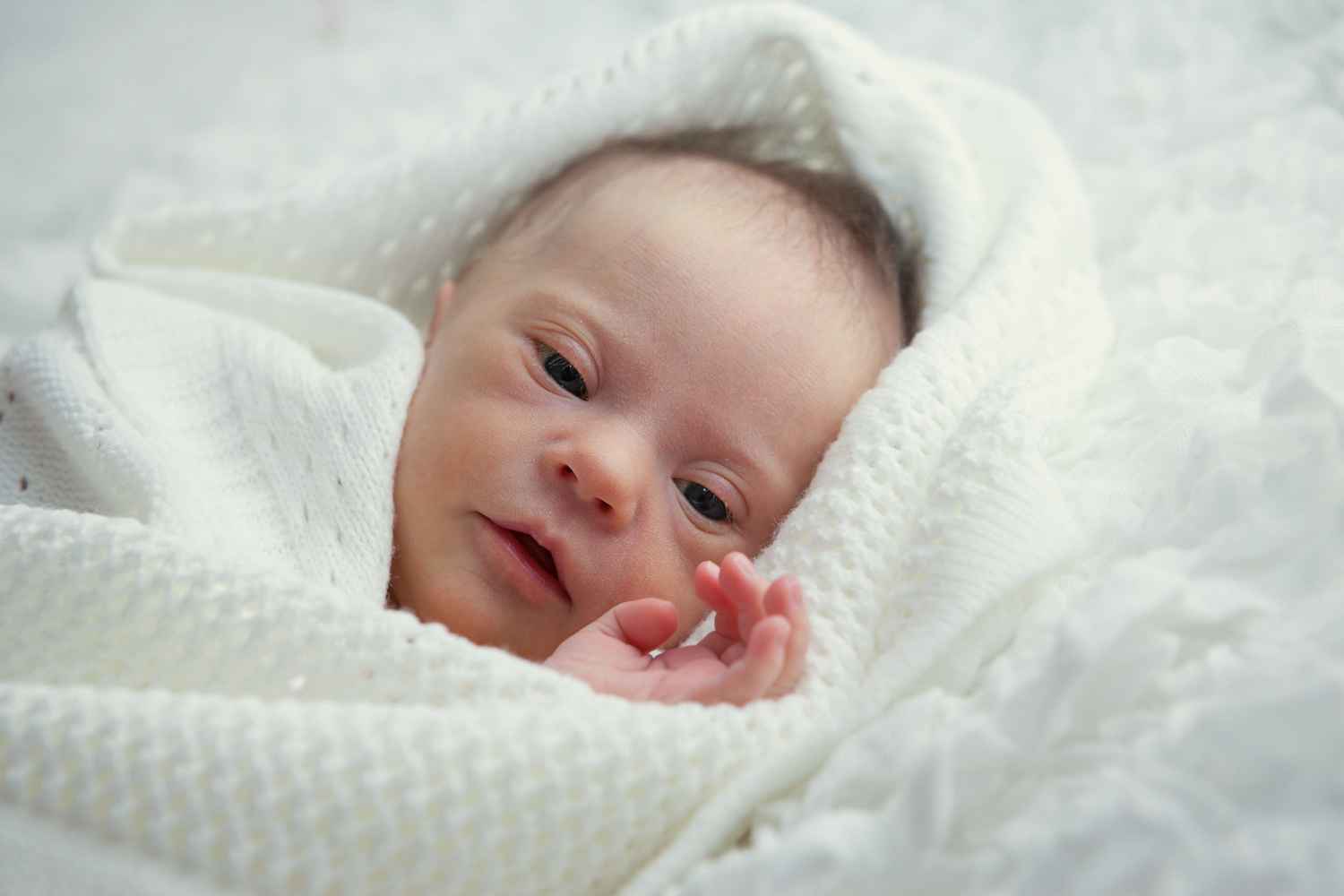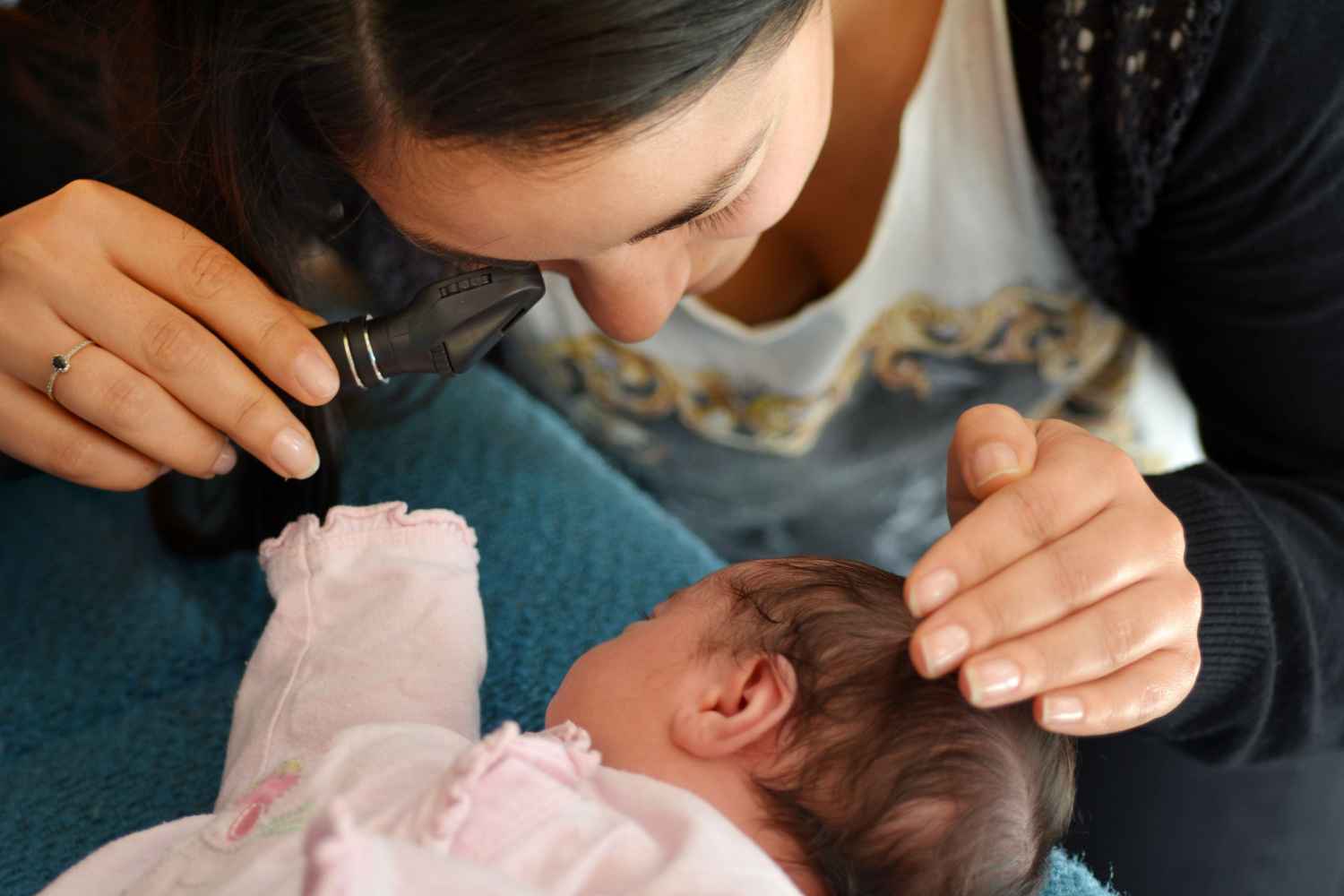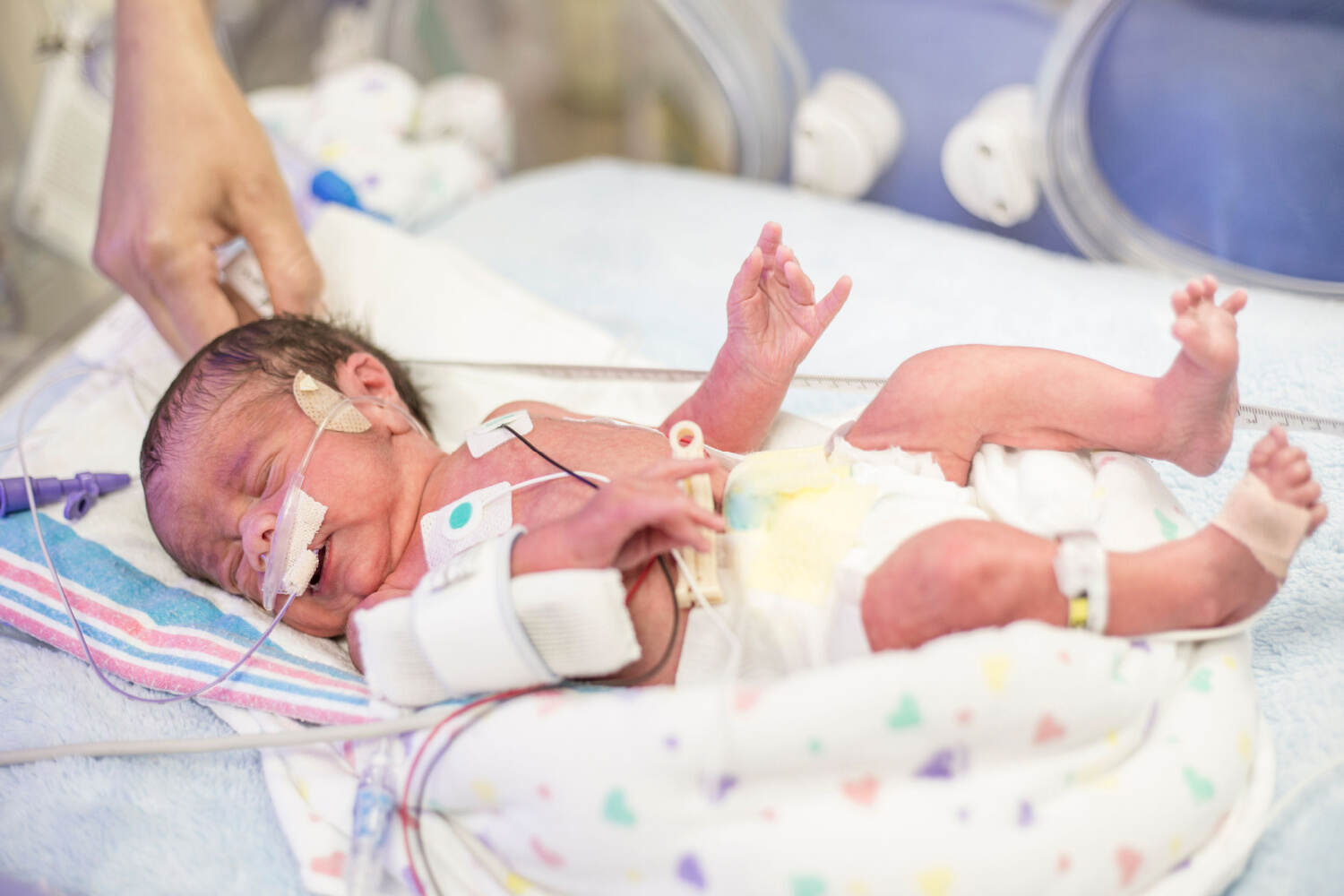
Cross Eyed Babies – Causes, Symptoms & Treatment
5 min readWritten by Gunjan Bedi


Newborn babies have enchanting eyes and all we want is to just gaze at those cute-eyed angels peacefully. Sometimes, you might have noticed your baby’s eyes are crossed and seem misaligned. Is that a problem or should I consult with a doctor? This might be the first question that hits your mind as a parent. The good news is you don’t have to worry because cross-eyed babies are common and cross-eyedness is normal in newborn babies or babies of 3-4 months of age.
Cross-eyedness usually occurs due to under-developed motor neurons. As babies grow, the condition automatically corrects itself as their motor skills develop. However, in some rare cases, it can occur due to strabismus that may require adequate treatment.
In This Article
- Why Are Some Newborn Babies Cross-Eyed and It is Normal?
- Causes of Cross-Eyedness in Babies
- Symptoms of a Baby Being Cross-Eyed
- Treatment Options For Cross-eyed Babies
- When Can Cross-Eyedness In Babies Become A Problem?
- When Should We Consult The Doctor For Cross-eyedness in Babies?
- FAQ’s
Why Are Some Newborn Babies Cross-Eyed And It is Normal?
Cross-eyed newborn babies are a normal phenomenon for the first few months (1). The condition usually occurs due to underdeveloped eye coordination. Typically, the eyes of babies do not always move in perfect sync, and this is a very common characteristic of a newborn. However, in some cases, it may indicate that the baby has strabismus (an eye condition in which babies are cross-eyed) (1A).
This condition occurs when babies’ eye muscles do not have coordinated movement. If this condition is caught by a doctor at an early stage, it will be corrected using therapy and glasses.
Causes of Cross-Eyedness in Babies

Cross-eyedness in newborn babies is a condition known as strabismus. The condition sometimes persists in families and is passed from one generation to another. However, babies with no strabismus history may also get cross-eyedness due to other reasons (1B) such as
- Cerebral palsy
- Premature birth
- Down syndrome
- Low birth weight
- Having farsightedness or far vision.
Symptoms of a Baby Being Cross-Eyed

Parents can notice the symptoms below to get a hint of whether their babies have cross-eyed conditions or not.
- Both eyes do not move together
- Squinting their eye-lids frequently specifically under bright light (2)
- Misaligned or uncoordinated eyes
- Inability to focus on an object
- Turning or tilting their head to look toward the object
- Bumping straight into the objects.
Treatment Options For Cross-eyed Babies

If doctors find that a newborn baby is suffering from strabismus or amblyopia (lazy or droopy eyes condition), they may provide glasses to correct the problem during the early child’s life. In some cases, doctors may suggest eye-coordination therapies to improve the babies’ focus on objects. However, some babies may require surgical correction in which doctors fix the eye muscles and maneuver these muscles to pull the eyes into the correct position. Here are some steps to resolve cross eye in babies (2A)
1. Eye Glasses
Usually, doctors may recommend some special glasses paired with special prism lenses to correct the cross-eyed condition in newborn babies. However, it is very challenging to provide glasses to newborn babies as they frequently move their hands. They may hit the glasses and remove them, but more often they may harm themselves with glasses.
2. Eye-Drops
A better alternative to correct the cross-eyed condition in babies is eye drops. Atropine drops are usually recommended to fix cross-eyed problems in babies.
These eye drops blur the vision of the eyes temporarily, forcing the eyes to work on muscles to improve coordination over time. It is a safe alternative for newborn babies to correct their cross-eyed condition.
3. Eye Patches
In some cases, doctors may suggest eye patches to put on the babies’ normal eyes for a few hours each day. These eye patches help to see only through eyes having coordination issues. As time passes, the muscles in the eyes muscles will improve and become stronger to help correct the condition.
4. Surgery
If the cross-eyed condition does not improve with eye-glasses, eye drops, and eye-patching, then eyes may require surgery. Doctors choose surgery procedures to tighten the eye muscles that are responsible for the crossed-eyed condition.
When Can Cross-Eyedness In Babies Become A Problem?
Cross-eyedness is a common eye condition that occurs in babies of age 3-4 months. This usually happens due to misalignment of the eye muscles, and the condition may require proper treatment through doctors.
Typically, it is not a cause of concern if babies get corrective treatment on time and their muscle coordination is corrected by the doctors with therapies and glasses.
However, the condition may become a problem if ignored or untreated for longer. This may result in lazy eyes and chances your baby may lose vision. Hence, it is essential to understand and identify the symptoms on time and connect with a doctor for corrective treatment on time.
When Should We Consult The Doctor For Cross-eyedness in Babies?

If your baby is above 3-4 months of age and they are still experiencing the crossed-eyed condition, it is an indication that they may have strabismus. In this condition, be sure to notice the above-listed signs and proceed for a doctor’s consultation to get appropriate treatment to avoid lazy eyes and vision loss situations.
In a nutshell, cross-eye in newborn babies is a normal condition and it goes as they grow. However, as a parent, if you notice the cross-eye condition does not go away even if they grow or have droopy eyes, ensure to focus on the symptoms and consult with a certified doctor to get the corrective treatment.
The most important thing here is to follow the physical eye exercises provided by the doctors and proceed with the treatment at an early stage. Do not wait for longer to get the treatment, choose the best doctors to guide you and for your baby’s cute little eyes.
It is normal for babies to be born cross-eyed. Timely medical intervention helps correct this condition in time and avoid any long-term effects. When in doubt, always consult your doctor and meet a pediatric ophthalmologist who will help resolve this issue.
FAQ’s
1. Is it Normal For Newborn Babies to Have Cross Eyes?
Yes, it is very common for newborn babies to have cross-eye conditions because their eye muscles are not developed completely, which causes them not to move together. It can be corrected once the eye muscles are developed or with some correction measures such as therapies and glasses.
2. Why Does my Baby Go Cross-eyed When Breastfeeding?
During breastfeeding, babies are unable to focus on the objects due to underdeveloped muscles for the first few months. This condition causes uncoordinated movement of their eyes; sometimes, they move outward and sometimes inwards, resulting in cross-eyed conditions.
3. How do You Fix a Cross-eye in Babies?
The cross-eyed condition in newborn babies can be fixed using eye exercises, glasses, and corrective surgery. However, before proceeding with any of the options, it is essential to check the symptoms and consult with any certified doctor of newborn babies. They will provide you with appropriate treatment to fix the cross-eyed condition in babies, depending on their symptoms.
References
- Profile of infantile strabismus at a tertiary eye care center in India – PMC – [https://www.ncbi.nlm.nih.gov/pmc/articles/PMC9672740/]
- Strabismus – StatPearls – NCBI Bookshelf – [https://www.ncbi.nlm.nih.gov/books/NBK560782/]

Gunjan Bedi,B.Sc (Biotechnology), M.Sc (Microbiology)
Gunjan Bedi an inspirational writer and story teller. My background in medical science make me a perfect content writer in parenting and medical content writing niche. My content has touched millions of readers within three years. Since past three years I have worked with several clients in different niche and provide easy to read content that readers love the most.Read more.
Responses (0)
Want curated content sharply tailored for your exact stage of parenting?
Related articles

Congenital Diaphragmatic Hernia in Babies – What is it, Types, and Complications

Tips and Ideas for Selecting Baby’s First Birthday Dress for Girls

When Should You Introduce Baby Slides to Your Baby?

Nail Polish For Babies – Is It Safe?

Top 8 Best Touch and Feel Books For Babies in First Year

Top Activities For a 4 Month Old Baby – Benefits and Tips For Parents
Sponsored content
Discover great local businesses around you for your kids.
Get regular updates, great recommendations and other right stuff at the right time.





